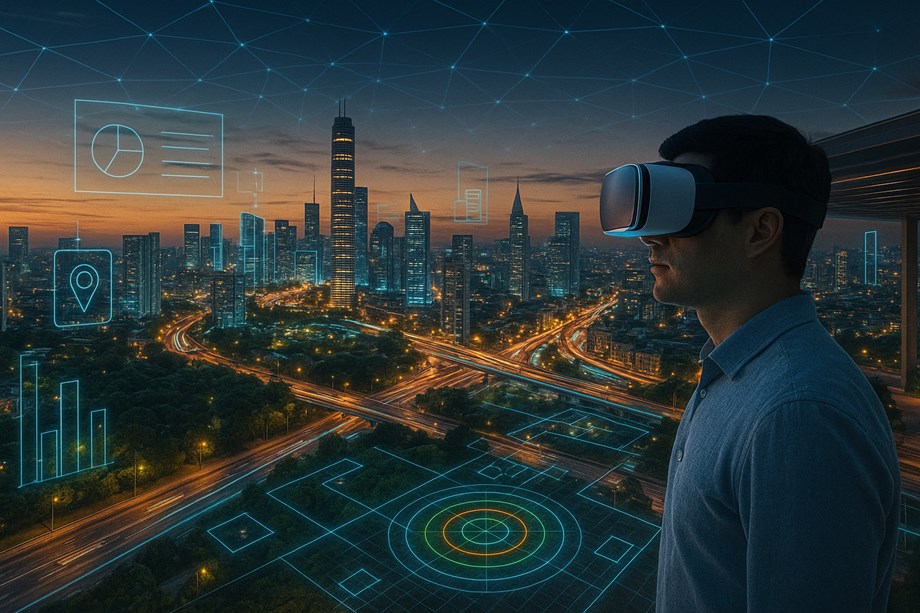Transforming Urban Sustainability: Smart Cities in the Metaverse

Transforming Urban Planning with metaverse Technologies
Rethinking Urban Development in the Digital Age
A pioneering study by researchers Keramatollah Ziari and Ehsan Dorostkar from the University of Tehran’s Department of Human Geography and Planning introduces a fresh perspective on urban planning through the lens of metaverse technologies. Published in Sustainable Futures, this research addresses the pressing need to innovate traditional city planning methodologies amid rapid urban growth, climate change, and complex infrastructure demands. By merging geospatial technologies, artificial intelligence (AI), and immersive virtual environments, the authors present a robust framework that empowers urban planners to model, simulate, and optimize urban areas in real time. Their geospatial-metaverse approach integrates digital twins with participatory simulations and AI-driven predictive analytics to foster the development of more sustainable and resilient urban environments.
A New Paradigm for Urban Planning
The study begins by underscoring the limitations of conventional planning models in meeting the intricate demands of contemporary urban settings. As cities evolve at an unprecedented rate, planners encounter significant challenges, including resource misallocation, disaster preparedness, and environmental concerns. The authors contend that the metaverse—a digital ecosystem enriched with virtual reality (VR), augmented reality (AR), AI, and blockchain—provides a forward-thinking solution. It facilitates the creation of digital twins, or virtual representations of urban spaces, which can be utilized for testing scenarios, experimenting with policies, and engaging stakeholders. These simulations create a secure environment where city officials can evaluate the potential impacts of various decisions prior to implementation. The immersive nature of the metaverse makes it an exceptionally powerful tool for sustainable urban planning.
A Comprehensive Framework for Smart Cities
Ziari and Dorostkar propose a three-part conceptual framework aimed at integrating geospatial data into the metaverse for thorough urban simulations. The components—virtual urban representation, spatial analytics, and stakeholder engagement—collaborate to establish a decision-making environment rich in feedback. This system leverages a variety of data sources, including remote sensing, geographic information systems (GIS), Internet of Things (IoT) sensors, and user interactions within the virtual realm. Unlike traditional GIS tools or isolated digital twin applications, this integrated platform enables real-time policy experimentation, adaptive land use modeling, and collaboration among multiple stakeholders. The authors assert that this comprehensive approach enhances urban crisis response by 37% compared to conventional or fragmented systems. AI algorithms analyze data to simulate the long-term effects of different urban policies, fostering evidence-based governance grounded in spatial intelligence.
Enhancing Citizen Engagement and Policy Evaluation
One of the most revolutionary features of the metaverse framework is its ability to enhance citizen involvement in planning processes. In cities like Helsinki, over 18,000 residents participated in zoning decisions using metaverse tools and blockchain-based voting systems. In Jakarta, virtual simulations contributed to a 34% reduction in flood evacuation times, demonstrating the effectiveness of immersive planning for disaster resilience. These examples highlight how the metaverse democratizes urban decision-making, empowering communities to actively shape their environments. Users can navigate proposed developments through VR, provide immediate feedback, and influence final outcomes, effectively bridging the gap between planners and the public.
In terms of analytics, AI-driven predictive tools within the metaverse can anticipate trends such as housing demand, mobility patterns, and infrastructure vulnerabilities. One cited model achieved over 92% accuracy in forecasting population movements by integrating IoT sensor data with metaverse user behaviors. However, the authors also point out emerging challenges, including data privacy issues and potential biases in AI algorithms. Specifically, training datasets often neglect marginalized communities, highlighting the need for federated learning approaches to ensure equitable outcomes. Digital literacy remains a concern, as research indicates that individuals over 55 are 42% less likely to engage with VR-based planning compared to younger demographics. Additionally, low-income groups may require simplified interfaces to effectively navigate AR environments.
Real-World Applications and Future Prospects
The metaverse is not just a theoretical concept; its practical applications are already transforming urban planning methodologies. The framework offers benefits across various use cases, from infrastructure design and traffic modeling to emergency preparedness and sustainability assessments. Urban policy can also gain from AI-enhanced simulations that support proactive decision-making based on solid data rather than reactive strategies. Importantly, the framework promotes a co-evolutionary approach to planning, viewing cities as dynamic systems that can adapt to environmental and socio-economic shifts.
To fully leverage this digital transformation, the authors stress the importance of interdisciplinary collaboration. Urban planners, geospatial analysts, software developers, and policymakers must work together to create metaverse platforms that are inclusive, scalable, and ethically governed. Investment in digital infrastructure, regulatory frameworks for virtual environments, and public outreach to enhance digital literacy are essential for realizing this vision.
A Vision for Future Urban Development
Ziari and Dorostkar’s research provides a timely and innovative roadmap for integrating the metaverse into the future of urban planning. Their geospatial-metaverse framework not only addresses existing technological gaps but also expands the possibilities for participatory, data-driven, and resilient urban design. While challenges such as the need for empirical validation and the risk of digital exclusion remain, the study lays a strong foundation for cities aspiring to become smarter, greener, and more inclusive. By tackling both the technical and human aspects of virtual planning, this research compellingly argues that the metaverse may represent the most promising frontier in the evolution of sustainable urban development.







